This house blends with the natural surroundings with all the comfort offered, has a floating design in the dense canopy of oak forest at the foot of the Santa Cruz Mountains to the west of the Silicon Valley.
When everyone needs a comfortable place to stay at home, fortunately many designers and architects really provide comfort for homeowners and one of them is Pam and Paul’s House. Designed by local studio Craig Steely Architecture, located on a sloping site in northern California, almost all parts of the house consist of a vast expanse of glass facing directly to the treetops. At first glance this house looks simple to look at from the outside, but walking inside, it is an awesome interior design with the use of height that sets it apart.
There are many fun things that will make you feel at home, starting a sofa/bed sunken which is right in the living room that makes us want to dive into it, to the home office is no less convenient to start working from home to relax while enjoying the beauty visual around.
From the architects,
The conceptual idea came clearly and quickly – float a glass box in the leaves of the trees on two trunk-like columns, disrupting as few oaks as possible. The dense tree canopy offers the opportunity to build a completely glass walled house, protected from the direct rays of the sun, yet filled with dappled sunlight. The steepness of the site directs the entry to the living level from above through a grass-covered roof, like an open meadow sitting in the tops of the trees.
A bridge of steel grating connects grade and the rooftop of native grasses. An observation deck sits in the grass field along with a garage/foyer of zinc panels and mirror glass. Sunlight funnels down through the foyer into the living level.
The main living area is cantilevered into the tree canopy while bedrooms, bathrooms, service and storage are located behind a long wall of cabinetry along the hillside. Distinct spaces (the living room, the office, and the kitchen) are delineated spatially in the open plan by sinking them into the concrete floor. These spaces are further delineated by material. In the sunken office, all surfaces-flooring, desk, cabinetry-are milled from a single slab of Chinese pistachio. The sunken living room is filled with 144 sq. ft. of B&B Italia’s “Tufty time” sofa components. In the kitchen/dining room a 22 ft. long counter of white composite quartz continues the kitchen work surface into the dining table. In the ceiling, flush mounted LED strips imply these zones. Strong geometric lines of light, reminiscent of a Dan Flavin sculpture, are clearly visible from the outside looking up through the leaves.
The house sits at the boundary between suburb and wilderness and straddles the two like it sits on the site. Just as they did before construction, Mule deer rest in the shade of the cantilever which is now a continuation of the oak canopy. Gray squirrels run along the branches and wild turkeys roost in the treetops, merely 10 ft. away from the kitchen table. The expanse of glass feels permeable and disappears only to leave nature as it always has been in the grove.

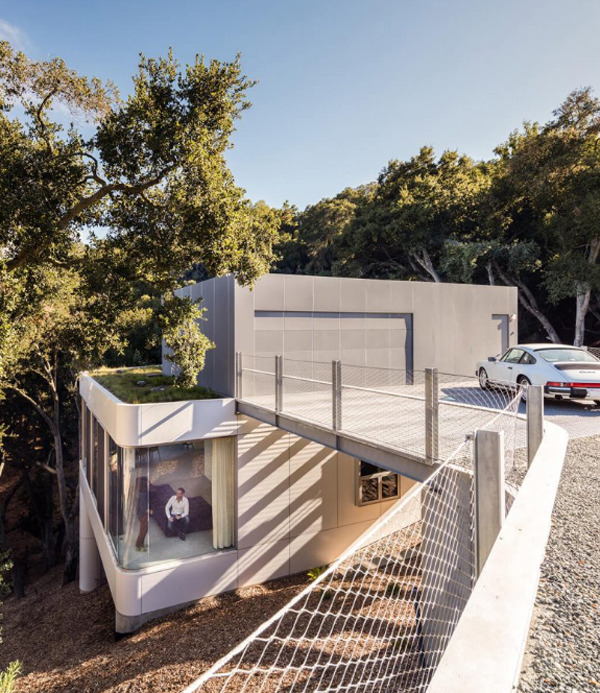
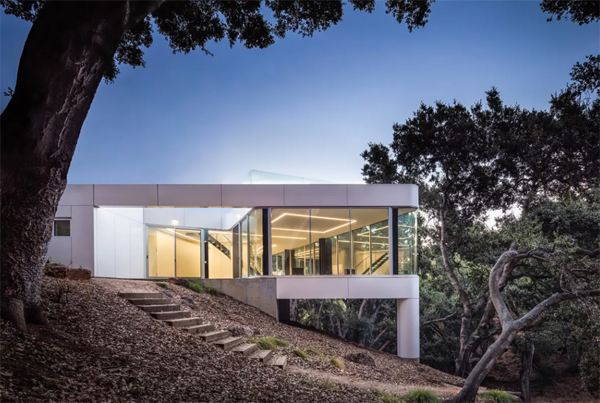
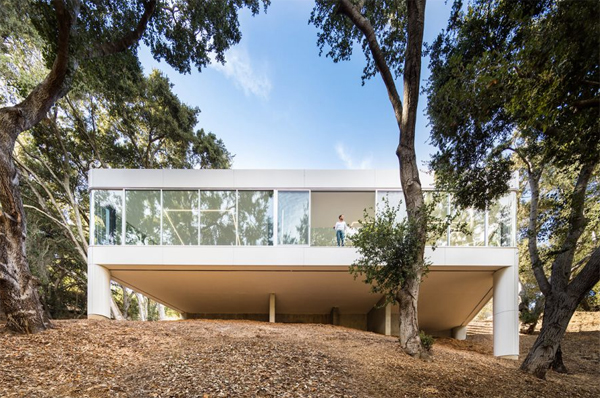

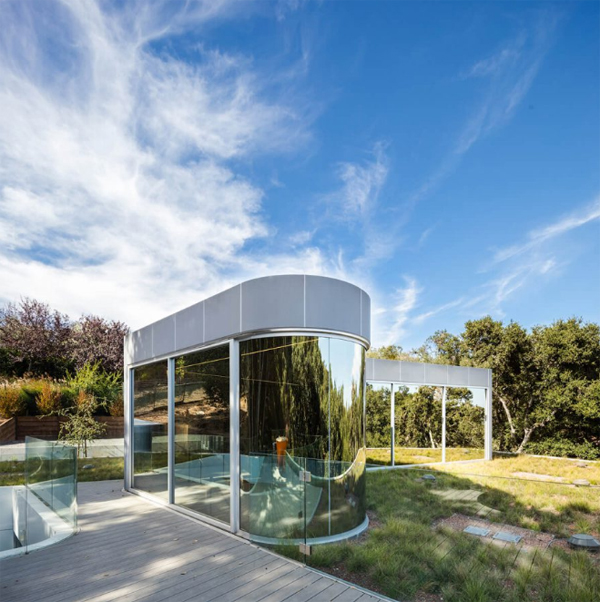
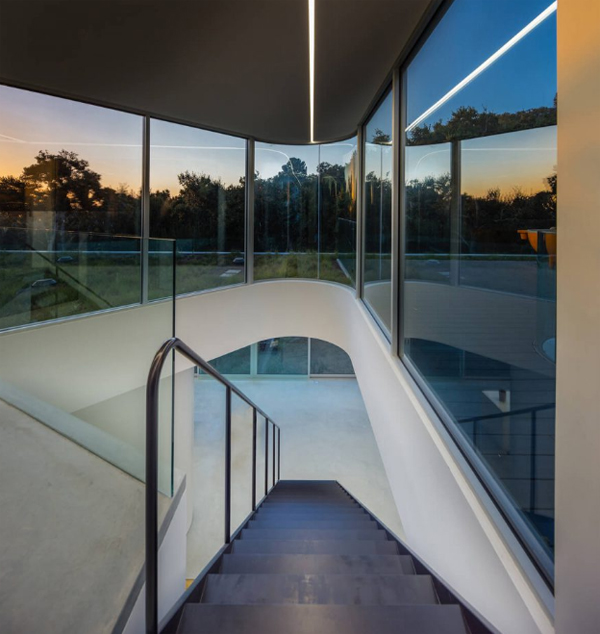
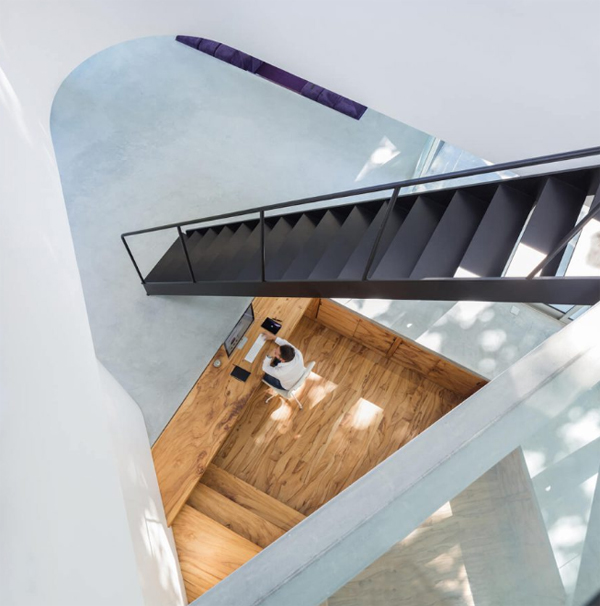
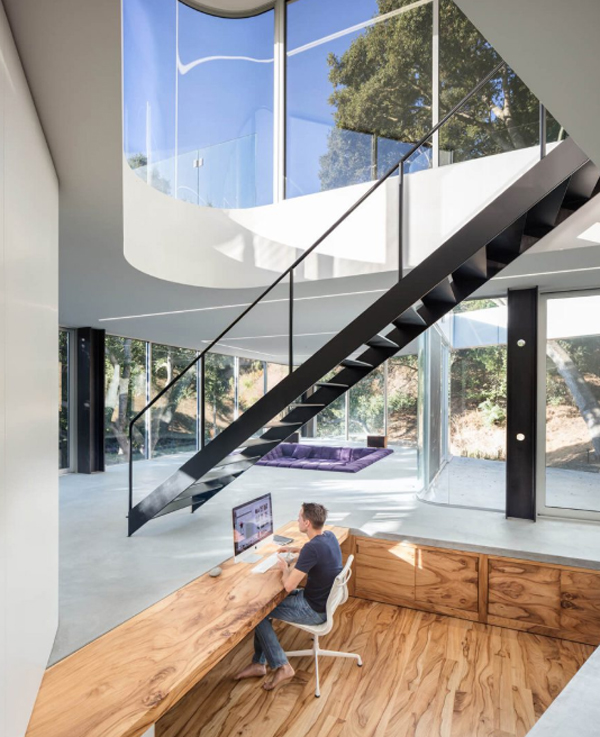
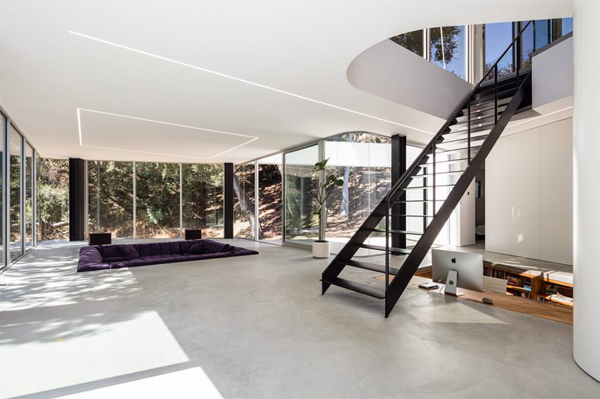
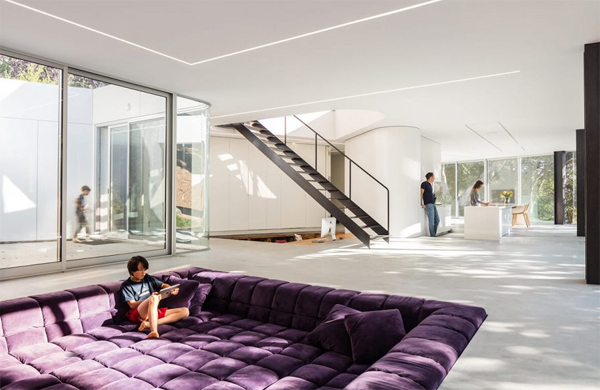
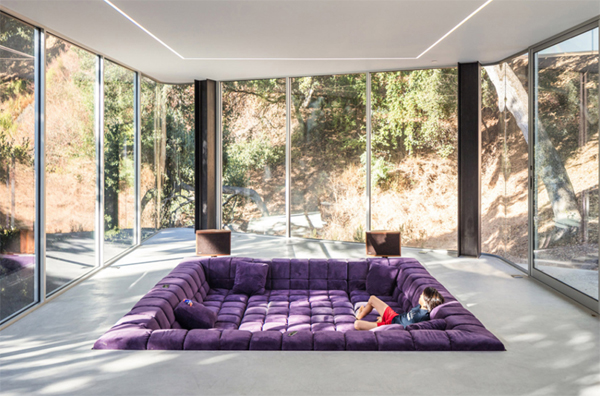
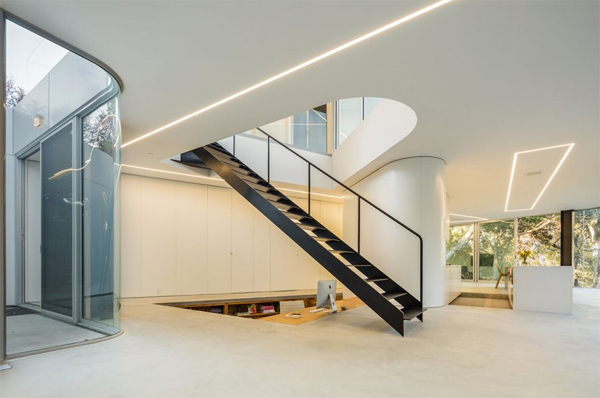
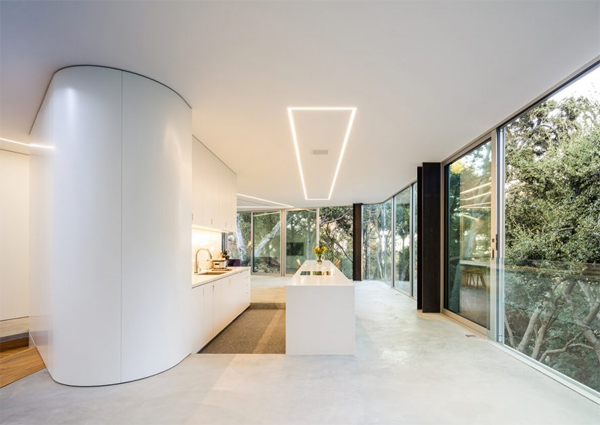
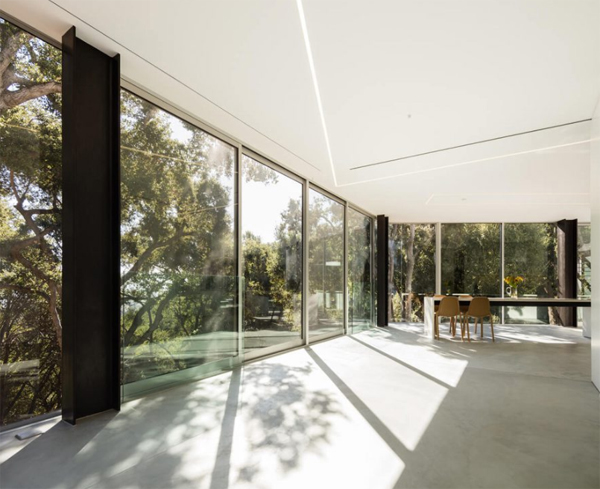
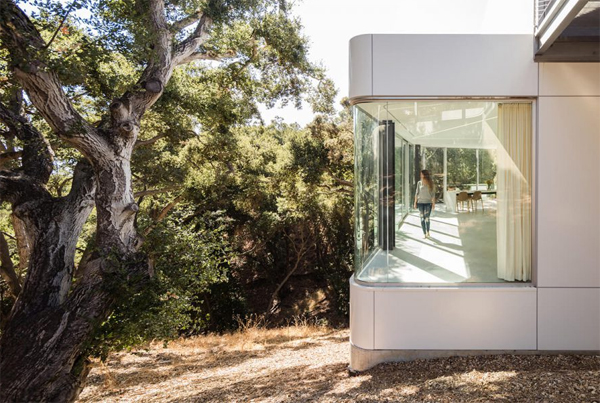


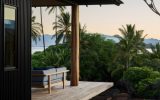
Reply